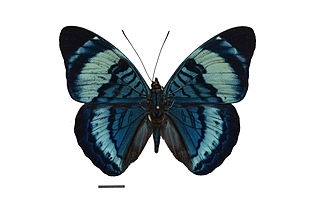
Sir David Frederick Attenborough is a British broadcaster, biologist, natural historian, and writer. He is best known for writing and presenting, in conjunction with the BBC Natural History Unit, the nine natural history documentary series forming the Life collection, a comprehensive survey of animal and plant life on Earth.

The Blue Planet is a British nature documentary series created and co-produced by the BBC and Discovery Channel. It premiered on 12 September 2001 in the United Kingdom. It is narrated by David Attenborough.

The mata mata, mata-mata, or matamata is a South American species of freshwater turtle found in the Amazon basin and river system of the eastern Guianas. It was formerly believed to also occur in the Orinoco basin, western Guianas and upper Rio Negro–Branco system, but in 2020 these populations were found to belong to a separate species, Chelus orinocensis. Subsequently, some authorities have modified the common name of Chelus fimbriata to Amazon mata mata. These two are the only extant species in the genus Chelus.

The Tapajós is a river in Brazil. It runs through the Amazon Rainforest and is a major tributary of the Amazon River. When combined with the Juruena River, the Tapajós is approximately 2,080 km (1,290 mi) long. It is one of the largest clearwater rivers, accounting for about 6% of the water in the Amazon basin.

The Satyrini is one of the tribes of the subfamily Satyrinae. It includes about 2200 species and is therefore the largest tribe in the subfamily which comprises 2500 species.

The butterfly subtribe Euptychiina is a diverse group within the tribe Satyrini, occurring throughout Central and South America, in addition to a few species known from North America. Euptychiina is a predominantly lowland group, with the exception of one Asian taxon Palaeonympha opalinaButler, 1871 and the Andean genus ForsterinariaGray, 1973. The taxon was erected by Lee Denmar Miller.

Langstonia is an extinct genus of notosuchian crocodylomorph of the family Sebecidae. It lived in the middle Miocene, in the "Monkey Beds" of the Colombian Villavieja Formation. Langstonia was named in 2007 by Alfredo Paolillo and Omar Linares for fossils originally described by Langston in 1965 as Sebecus huilensis. Thus, the type species is L. huilensis.

Panacea procilla, the Procilla beauty, is a species of butterfly of the family Nymphalidae. It is found from Panama to the Amazon basin and Colombia.

Nessaea hewitsonii, the Hewitson's olivewing, is a species of butterfly of the family Nymphalidae. It is common in a broad range of the Amazon basin including the eastern slopes of the Andes mountain range. It is found in high evergreen tropical forest, semi-deciduous tropical forest, and riverine forest.

Adelpha mesentina, the mesentina sister, is a species of butterfly of the family Nymphalidae. It is found in the eastern Andes from Venezuela to Bolivia and also on the Guiana Shield and throughout the central and western Amazon basin.

Baeotus aeilus, the Amazon beauty, is a species of butterfly of the family Nymphalidae. It is found in the upper Amazon areas of Brazil, Ecuador and Peru.

Heliconius demeter, the Demeter longwing, is a butterfly of the family Nymphalidae. It was described by Otto Staudinger in 1897. It is found in the Northern and Eastern part of the Amazon basin, from Guyana to Northern Brazil and Peru. The habitat consists of sandy rainforests.

Heliconius elevatus is a butterfly of the family Nymphalidae native to the Amazon Basin.

Euptychia sophiae is a species of butterfly in the family Nymphalidae. It is found in western Brazil and in the neighbouring department of Loreto in north-eastern Peru. The habitat consists of submontane dense ombrophilous forests.

Microleo attenboroughi is a very small species of the Thylacoleonidae family of marsupials from the Early Miocene of Australia, living in the wet forest that dominated Riversleigh about 18 million years ago. The genus Microleo is currently known from a broken palate and two pieces of jaw, containing some teeth and roots that correspond to those found in other species of thylacoleonids. The shape and structure of the blade-like P3 tooth, a premolar, distinguished the species as a new genus. It was found in Early Miocene-aged deposits of the Riversleigh fossil site in Queensland, regarded as one of the most significant palaeontological sites yet discovered, and named for the naturalist David Attenborough in appreciation of his support for its heritage listing. The anatomy of Microleo suggests the genus is basal to all the known thylacoleonids, known as the marsupial lions, although its relative size prompted one discoverer to describe it as the "feisty" kitten of the family.

Pristimantis attenboroughi, also known as Attenborough's rubber frog, is a species of frog in the family Strabomantidae. It is endemic to the Peruvian Andes and has been recorded in and near the Pui–Pui Protection Forest. It is the first amphibian named after David Attenborough. It was discovered by Edgar Lehr and Rudolf von May during a period of two years of studying the forests of Peru. The species description was based on 34 specimens caught at elevations of 3,400–3,936 m (11,155–12,913 ft) above sea level.

The Inambari gnatcatcher is a species of bird in the family Polioptilidae. It is endemic to Brazil.
Dynasties is a 2018 British nature documentary series on five vulnerable or endangered species known to form enduring populations: chimpanzee, emperor penguin, lion, tiger and African wild dog. The series is produced by the BBC Natural History Unit and narrated by David Attenborough. The music score was composed by Benji Merrison. Each episode ends with Dynasties On Location, a behind the scenes look at the planning of each episode, which could be years in advance before production crew even started filming.

Malmidea attenboroughii is a species of corticolous (bark-dwelling), crustose lichen in the family Malmideaceae. It is known to occur from a single location in the Amazon rainforest of Bolivia.

















